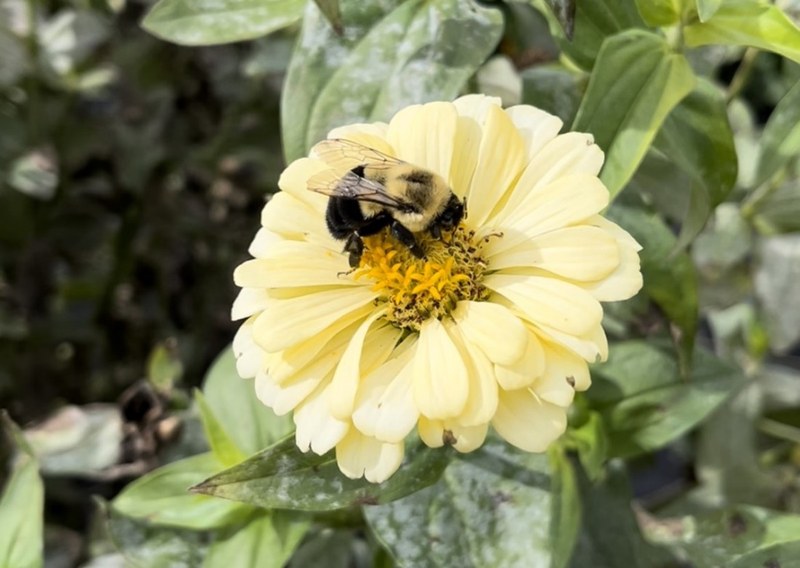Posted: October 17, 2022
IBC Education specialist Heather Desorcie reports on how pollinators prepare for winter at the Arboretum at Penn State.

The Pollinator and Bird Garden at The Arboretum at Penn State; Oct. 8th 2022
A walk through the Pollinator and Bird Garden at The Arboretum at Penn State in October appears quieter; slower. Gusts of wind rustle the dried hoary vervain (Verbena stricta) and purple coneflower (Echinacea purpurea). A once-green landscape has faded into a softer palette of golds, purples, and whites on a brown backdrop. These pops of color come from plants such as goldenrod (Solidago spp.), shale barrens buckwheat (Eriogonum allenii), woodland sunflower (helianthus divaricatus), blazing-star (Liatris scariosa), New England aster (Symphyotrichum novae-angliae ‘Purple Dome’), aromatic aster (Symphyotrichum oblongifolium ‘October Skies’), wood violet (Viola riviniana), blue mistflower (conoclinium coelestium), and white heath aster (Symphyotrichum ericoides).
Mountain mint (Pycnanthemum spp.) is no longer covered with bustling insects. However, pollinators still forage from late blooming flowers as they prepare for the cold winter months ahead. September saw migrating monarch butterflies pass through on their way to Mexico. They particularly loved the blazing-star blooms.

Watch the monarchs fly among the blazing-star on Instagram
Migration is just one strategy animals use to survive the winter. Bumble bee queens mate and fill up on pollen and nectar before they enter diapause (a form of suspended development, similar to hibernation) underground. They will initiate new colonies come spring. Honey bee queens and their daughter workers eat from honey reserves throughout the winter, and maintain a tight winter cluster to stay warm. Fall signifies the worker’s final days to collect nectar before it becomes too cold to leave the hive.

A bumble bee queen feeds from a flower at Rooted Farmstead in Bellefonte, PA
Most solitary bee adults do not survive the winter. However, their offspring will enter diapause as pupae or adults until they receive the right temperature cues to emerge the following spring and summer. In winter, although adult bees are no longer active at hotel entrances, their offspring are safely sealed inside their tunnels; you can spot completed nests by looking for sealed plugs at the face of the hotel, which can be made of mud, leaf pieces/pulp, or straw.

Three bee hotels can be found in the Pollinator and Bird Garden
After the insects are no longer active, birds such as American Goldfinch, Black-capped Chickadee, Northern Cardinal, and Blue Jay will stay in our gardens through the fall and winter. Look for them eating seeds from coneflower, aster, and sunflower. Winter birds also enjoy eating berries from plants such as arrowwood viburnum (Viburnum dentatum) and later, winterberry (Ilex verticillata).

Listen for the ‘po-ta-to-chip’ flight calls of the American Goldfinch
Every season has a unique color palette and different animals to enjoy. Fall can seem fleeting, as each passing day brings us closer to winter. Take time to enjoy the autumn days wherever you call home. There may be more happening in your garden this time of year than first meets the eye.

